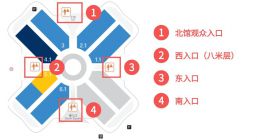Scan QRCode

On May 12, the national bureau of statistics released its price index for April.
In April, the consumer price index (CPI) rose 3.3 percent year on year, down 1 percentage point from the previous month.The producer price index fell 3.1 per cent year on year, an increase of 1.6 percentage points from the previous month.
In April, the CPI and PPI both fell, which was more than expected, and the weak demand showed itself.In April, China's economy was recovering at a faster pace. However, under the circumstances of covid-19, overseas demand shrank significantly. Orders of export enterprises dropped sharply, and overall overall demand weakened, leading to a downward trend in prices.The decline in international oil and commodity prices has become an important input factor affecting prices.
In response to weak demand, the central and local governments have launched a series of measures to boost domestic demand, such as local shopping festivals and the acceleration of traditional and new infrastructure projects.Financial data for April showed that medium - and long-term loans to businesses and households grew rapidly, and business investment and housing purchases resumed at a faster pace.
Looking ahead, there are still uncertainties about how the epidemic will evolve overseas.International oil prices in March, April after the continuous bottom, since may ushered in a small rise.Central Banks of major countries around the world have unleashed unprecedented expansionary policies, and their effects have yet to be tested.

The consumer price index rose 3.3 per cent in April from a year earlier, down one percentage point from the previous month.- the Xinhua News Agency
Fresh vegetables, pork prices fell significantly
The CPI rose 3.3 percent in April from a year earlier, mainly due to the high food accumulation base.
In April, food, tobacco and alcohol prices rose 11.3 percent year on year, accounting for about 3.39 percentage points of CPI growth.Among them, pork prices rose 96.9 percent, affecting CPI growth by about 2.36 percentage points.
However, food prices are gradually coming down, shaking off the tension in the early days of the epidemic, which is also a major factor in the decline in price rises.The outbreak pushed up food prices, mainly in the first two months of this year, when the CPI rose more than 5 percent.With the recovery or increase of transportation, logistics and food supply, the CPI growth rate in March and April also gradually fell to 4.3% and 3.3%.
In April, food, tobacco and alcohol prices fell 2.1 percent month-on-month, with vegetable and pork prices dropping 8 percent and 7.6 percent respectively.
Dong lijuan, a senior statistician with the city department of the national bureau of statistics, said food was the main factor driving the CPI down.In food, the warm weather, the supply of fresh vegetables increased, the price fell by 8.0% month-on-month;The recovery of pig production capacity was accelerated, and the supply of pork continued to increase. As a result, the price of pork continued to fall by 7.6%, extending the decrease by 0.7 percentage point.For non-food items, the prices of gasoline, diesel and liquefied petroleum gas dropped by 7.5%, 8.2% and 3.7%, respectively, due to fluctuations in the international crude oil price.Air fares rose 5.6 per cent as work resumed and demand for travel increased.
Not only is travel demand on the rise, the manufacturing purchasing managers' index for April and the non-manufacturing business activity index for April were both in positive territory, reflecting continued improvement in manufacturing and services.Among them, the restaurant industry, retail, construction and other business activity index, is significantly improved compared with the previous month.
However, the recovery in this part of the economy has not yet been reflected directly in prices.In April, prices in the eight categories of health care rose by 0.2% month-on-month, including clothing, housing, daily necessities and services, transportation and communications, education, culture and entertainment.Core CPI, which excludes food and energy, rose just 1.1 percent in April from a year earlier, a narrower reading that also reflects weak overall demand.
Zhou maohua, an analyst with the financial market department of China everbright bank, told the 21st century business reporter that April's year-on-year CPI decline was more than expected, mainly due to four factors: falling pork prices, falling fruit and vegetable prices, slightly faster domestic production and supply than domestic demand in April, and low imported prices.Since march, the normalization of production and life in China has accelerated, and the effect of policies to expand domestic demand will gradually emerge. In the future, domestic prices will return to a moderate range.
Liu xuezhi, a senior researcher at the financial research center of the bank of communications, told 21st century business herald that consumer demand has been slow to improve due to the epidemic, and overall demand has tended to weaken.With the implementation of measures to boost domestic demand, the downward trend of non-food price growth is expected to ease. However, it will take some time for the consumption of tourism, catering, accommodation and living services to recover. In addition, the price of industrial products will drop, so the price of non-food may remain low in the future.
Into may, economic activities are still accelerating the recovery.For example, guangdong announced that it will lower its emergency response level from level two to level three from midnight on May 9.Shopping malls, supermarkets, hotels and restaurants will be opened to the public.We will open parks, tourist attractions, sports venues, libraries, museums, art galleries and other indoor venues, as well as various kinds of meetings and exhibitions through reservation and current restrictions.Primary and secondary school students throughout guangdong will also return to school in batches.
There is no long-term "deflationary" pressure
The producer price index fell 3.1 percent in April from a year earlier, the lowest in nearly four years (a bigger drop than in May 2016).The month-on-month decline in producer prices, which fell 1.3 per cent in April, is also accelerating.
The sharp decline in the international crude oil price is an important factor affecting the accelerated decline in the PPI.In April, oil and gas exploration prices fell 35.7% from the previous month, oil, coal and other fuel processing prices fell 9.0% from the previous month, and chemical raw materials and chemicals manufacturing prices fell 3.0% from the previous month.
Affected by the epidemic, overall demand is weak, leading to pressure on prices of most industrial products.In April, 30 of the 40 industrial sectors surveyed by the national bureau of statistics (NBS) saw month-on-month price declines, eight saw price increases and two saw prices remain flat.Prices in a few sectors rebounded, with prices in the pharmaceutical manufacturing sector up 0.3% month-on-month in April, and those in the computer, communications and other electronic equipment sectors also up 0.3% month-on-month.
Although the PMI was in an expanding range in April, the expansion was weaker than in March, indicating a weaker recovery in demand than in production.A survey by the national bureau of statistics in April found that 57.7 percent of enterprises reported a shortage of orders, with some reporting weak market demand, difficulty in selling their products and the need for more time to replenish orders.Affected by the epidemic overseas, export enterprises are under pressure. Some manufacturing enterprises report a sharp drop in newly signed export orders, or even cancellation of orders that have already started production.
"The epidemic has hit the global economy," liu said. "export orders in China's manufacturing industry have decreased significantly, and weaker external demand will further affect the lower prices of industrial products."In the near term, the PPI may still decline. Deflationary pressures have emerged in the industrial sector, and all measures to boost domestic demand need to be intensified.The impact of weaker external demand will be mitigated by the strengthening of steady domestic growth and the gradual recovery of infrastructure investment and various types of production.
Zhou said the global situation is still serious and it is necessary to prevent the global economy from falling into recession in the coming months, which will be a drag on China's external demand and may extend to domestic demand.At present, the main contradiction is still to hedge the economic "too cold", the domestic still need to moderately increase the intensity of counter-cyclical adjustment.The unprecedented fiscal and monetary policies adopted by major economies in the world have gradually unleashed their effects and helped stabilize global demand for energy commodities.The PPI is expected to bottom out in May from a year earlier and then improve modestly, but remain negative for the whole year.
On May 10, the people's bank of China released a report on the implementation of China's monetary policy in the first quarter of 2020, pointing out that in the short term, covid-19 may continue to cause price disturbance from both supply and demand.But from the fundamental point of view, China's economic performance is generally stable, there is no basis for long-term inflation or deflation.The report also raised the risk that the duration and negative impact of the global epidemic may exceed expectations. The highly loose unconventional monetary and fiscal policies of major economies can only offset the negative impact of the epidemic. The global economic recovery depends on the progress in epidemic prevention and control, and the negative impact of unconventional policies will gradually emerge.
There are still uncertain factors in the outbreak overseas, but domestic policies to stabilize growth and expand domestic demand are intensifying.On May 11, jiangsu province held a meeting of the provincial leading group on epidemic prevention and control, making clear the need to win both the victory of epidemic prevention and control and the victory of economic and social development.To be specific, we need to open up the industrial, market and economic and social cycles, expand effective investment, speed up the construction of both traditional and new infrastructure, and take multiple measures to make up for consumption and release potential, so as to stabilize the basic market of foreign trade and foreign investment.The jiangsu provincial department of industry and information technology said recently that the investment scale in new infrastructure represented by 5G is expected to exceed 120 billion yuan in the next three years.
AMS2024 Exhibition Guide | Comprehensive Exhibition Guide, Don't Miss the Exciting Events Online and Offline
Notice on Holding the Rui'an Promotion Conference for the 2025 China (Rui'an) International Automobile and Motorcycle Parts Exhibition
On September 5th, we invite you to join us at the Wenzhou Auto Parts Exhibition on a journey to trace the origin of the Auto Parts City, as per the invitation from the purchaser!
Hot Booking | AAPEX 2024- Professional Exhibition Channel for Entering the North American Auto Parts Market
The wind is just right, Qianchuan Hui! Looking forward to working with you at the 2024 Wenzhou Auto Parts Exhibition and composing a new chapter!
Live up to Shaohua | Wenzhou Auto Parts Exhibition, these wonderful moments are worth remembering!
Free support line!
Email Support!
Working Days/Hours!





